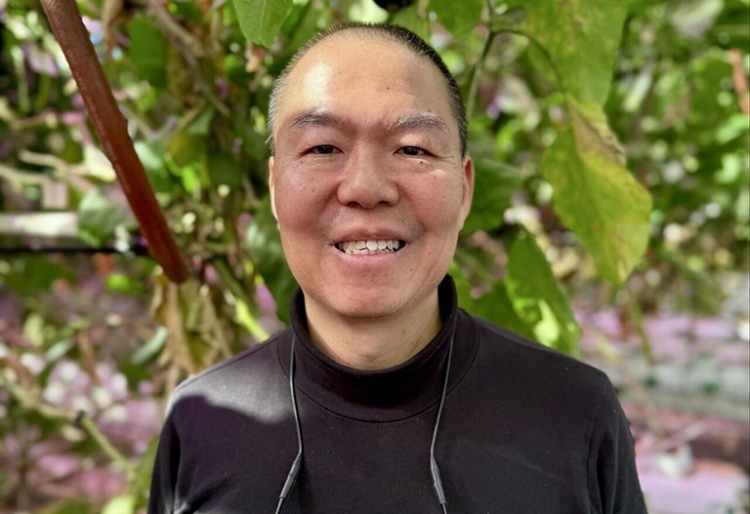Rooftop greenhouses promise fresh, local food, greener urban spaces and a more sustainable lifestyle. But despite the growing interest, significant obstacles remain – from structural challenges to energy inefficiencies – that prevent these green roofs from reaching their full potential.
Bruno Lee, associate professor in the Department of Civil, Structural and Environmental Engineering, is leading research to make rooftop farms more practical, efficient and integrated into the buildings below.

Associate Professor Bruno Lee visits the Lufa Farms greenhouse in Montreal
“Our goal is to understand how to integrate greenhouses into buildings in a way that benefits both people and the environment,” he says.
Reducing energy consumption while optimizing efficiency
Many urban roofs, particularly those of warehouses in Montreal, are structurally capable of supporting greenhouses. But only a few take advantage of the opportunity. Lee wants to provide a blueprint for building safe, energy efficient and sustainable rooftop farms.
As a Concordia graduate who returned in 2014 after completing his doctorate in the Netherlands, Lee had the opportunity to closely observe Dutch advanced greenhouse systems. There he gained insights into energy-efficient measures and coatings that optimize light absorption and support plant growth at different stages, which inspired him to conduct similar research in Montreal.
In April, his project “Closing the Water-Energy-Food Loop” received impact funding from Volt-Age, Concordia’s electrification research program. The focus of the initiative is aquaponic greenhouses. This farming method uses fish waste as fertilizer for plants, giving plants a fuller, more natural flavor.
Unlike traditional greenhouses, which often operate independently, his research focuses on integrating the greenhouse into the building itself.
“Greenhouses need carbon dioxide, which is exactly what we emit from the buildings,” he explains. “Most systems don't combine the two. By integrating them, we can reduce energy consumption, optimize plant growth and improve overall efficiency.”
A scalable solution
The potential impacts are far-reaching. Integrated rooftop greenhouses can reduce energy consumption, reduce the carbon footprint and strengthen the resilience of urban food. By modeling energy and plant growth together, Lee's team offers a scalable solution for cities looking to balance density and sustainability.
His work also extends beyond urban centers. Lee's team is exploring applications for smaller cities and northern communities, where fresh produce is often limited and expensive.
In his opinion, by placing greenhouses next to existing community buildings, they want to adapt building-integrated principles to local conditions.
“Fresh food is not always easy to come by in these areas,” says Lee. “We want to make it accessible, sustainable and resilient.”
Learn more about Concordia's Volt-Age Electrification Research Program.
